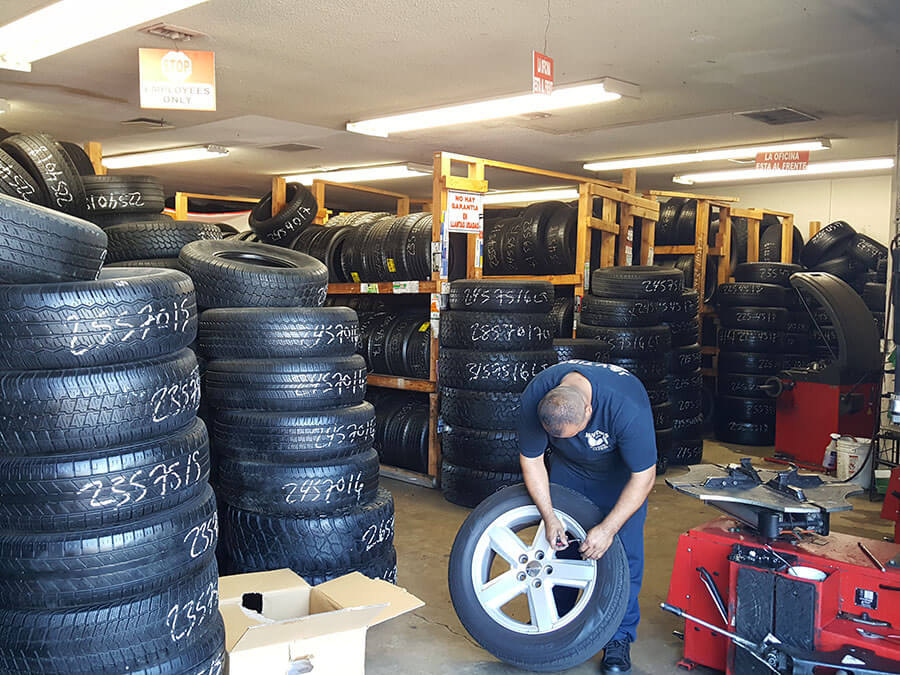Tire Solution: The Effect of Weather
When it pertains to making sure ideal performance and safety and security on the roadway, recognizing the influence of climate condition on tire solution is vital. From scorching warmth to icy roadways, each weather element can significantly influence tire functionality and total driving experience. By diving into the results of differing climate problems on tires, chauffeurs can obtain useful insights that may enhance their lorry's efficiency and longevity. In this discussion, we will certainly discover the intricate partnership in between weather and tire service, shedding light on the significance of weather-specific tire upkeep practices and factors to consider.
Warmth and Tire Performance
When subjected to high temperature levels, tires experience changes in efficiency that can considerably influence vehicle security and handling. The warm generated from extended driving or warm weather conditions causes the tire rubber to soften, leading to minimized step life and increased wear. As the rubber comes to be softer, the tire's grasp when driving decreases, impacting stopping distances and general grip. In severe instances, excessive heat can also create tire blowouts, posturing a severe safety danger to the vehicle and its residents.
In addition, high temperature levels can speed up the procedure of tire aging, creating the rubber to weaken extra promptly. To minimize the results of warm on tire performance, vehicle drivers need to regularly check their tire pressure, turn tires to ensure also wear, and inspect for any type of signs of damages.
Cold Weather Impacts
Cold weather conditions can have a significant impact on tire efficiency and safety and security. In cold climate, tires may likewise shed air stress extra quickly, which can influence handling and gas performance.
To reduce the effects of winter on tires, it is vital to consistently inspect tire pressure and inflate them to the supplier's advised levels. Utilizing winter or all-season tires developed for chilly weather problems can additionally improve traction and hold on icy or snowy roads - tires morris il. Correct tire maintenance, including routine assessments for wear and damages, becomes even much more vital during chillier months to make sure optimal efficiency and security
Rainy Issues Impact
Tires with worn-out treads are more susceptible to hydroplaning, where a layer of water builds up between the roadway and the tire surface area, leading to loss of grip. To fight this, drivers need to regularly check their tires for adequate tread depth and consider investing in tires specifically created for damp conditions.

Snow and Tire Security
When driving in snowy conditions, having the ideal tires can make address a considerable difference in security and performance. Wintertime tires are developed with unique rubber substances and step patterns to offer much better grip on snow and ice compared to all-season tires.
Along with utilizing winter months tires, it is crucial to ensure they are effectively blown up. Winter can create tire pressure to go down, affecting traction and my company handling (discount tires morris il). Consistently inspecting and maintaining the right tire stress is crucial for optimal performance in snowy problems

Weather-Related Tire Maintenance
When confronted with numerous weather condition problems, appropriate tire maintenance becomes a critical facet of vehicle safety and security and efficiency. Weather-related tire upkeep incorporates a variety of methods aimed at guaranteeing optimal tire function and long life in various weather situations. One key aspect of weather-related tire maintenance is tire stress regulation. Fluctuating temperature levels can trigger tire stress to differ, influencing grip and fuel efficiency. Frequently readjusting and examining tire pressure according to producer recommendations is necessary for safe driving in changing weather. Additionally, tire tread deepness plays a substantial function in dealing with various climate components. Tires with adequate step depth offer much better hold on wet or icy roadways, decreasing the danger of skidding or hydroplaning. Examining tire tread frequently and changing tires when tread wear reaches a certain deepness is important for preserving traction and security in adverse climate. By focusing on weather-related tire maintenance, chauffeurs can enhance safety, boost lorry performance, and extend the life-span of their tires.
Conclusion
In verdict, weather condition problems have a considerable impact on tire see this here performance and safety and security (morris tire and alignment). From warm impacting tire stress and wear to cold weather condition decreasing grip, it is vital to think about the weather condition when keeping and utilizing tires.
In this discussion, we will explore the complex relationship between weather conditions and tire service, dropping light on the importance of weather-specific tire maintenance techniques and factors to consider.
